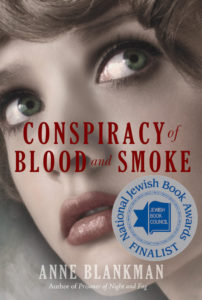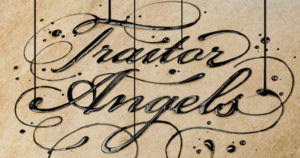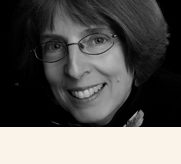 Today I want to sing the praises of Richmond, Virginia’s writing community! I’m fortunate to be surrounded by poets, novelists, journalists, and nonfiction geniuses. Just a few minutes away lives Anne Blankman, and last year when I visited, her daughter snapped this picture of us.
Today I want to sing the praises of Richmond, Virginia’s writing community! I’m fortunate to be surrounded by poets, novelists, journalists, and nonfiction geniuses. Just a few minutes away lives Anne Blankman, and last year when I visited, her daughter snapped this picture of us.
Anne is the author of three YA novels, all published by Balzer+Bray: Prisoner of Night and Fog, Conspiracy of Blood and Smoke (a sequel to the first), and Traitor Angels.
A.B. Westrick: Hello, Anne, and welcome to my blog!
Anne Blankman: Thanks so much for having me!
ABW: Today I want to discuss your first novel, but before we jump in, I have to tell readers that I’ve got a giveaway here: an Advance Reader Copy (ARC) of Traitor Angels, signed by you! Readers who leave a comment at the bottom of this post will be entered into a drawing for the ARC. The deadline to comment and have your name in the drawing is June 15, 2017.
Now let’s focus on Prisoner of Night and Fog. Set in Germany during Hitler’s rise to power in the 1930s, it’s the story of 17 year-old Gretchen Müller, who adores Hitler and knows him as “Uncle Dolf.” When Gretchen learns that her father had been murdered, not martyred (as she’d been told), she sets out to find the truth.
So my first question is about Hitler. Readers might think they already know him, but you show Hitler in new and intimate settings. I particularly enjoyed the parts where you depict him interacting with close friends and family members. How did you go about crafting him? How did you come to imagine the way he might have acted in all these scenes—in parks, restaurants, his flat, etc.?
 AB: I researched Hitler extensively before I wrote a single word of Prisoner. Biographies, social histories, and psychological profiles were helpful, but I found memoirs and diaries to be invaluable. Reading about people’s personal experiences with Hitler helped me form a more complete picture of him. A collection of interviews of so-called “Hitler children”—the offspring of Nazi leaders—gave me insight into how Hitler treated young people, particularly young females. I also listened to recordings of his early speeches to get a sense of his voice and speaking patterns, and I watched endless videos of him so I could study his gestures and gait. (And by the way, some of the Hitler children really did call him “Uncle Dolf”!)
AB: I researched Hitler extensively before I wrote a single word of Prisoner. Biographies, social histories, and psychological profiles were helpful, but I found memoirs and diaries to be invaluable. Reading about people’s personal experiences with Hitler helped me form a more complete picture of him. A collection of interviews of so-called “Hitler children”—the offspring of Nazi leaders—gave me insight into how Hitler treated young people, particularly young females. I also listened to recordings of his early speeches to get a sense of his voice and speaking patterns, and I watched endless videos of him so I could study his gestures and gait. (And by the way, some of the Hitler children really did call him “Uncle Dolf”!)
ABW: Awesome. Your research really paid off. In some scenes, you even manage to make Hitler come across as a sympathetic figure, and I found those scenes intriguing. (And disturbing.) Of all the real historical figures in the novel, which was the hardest for you to write, and why was that one so hard?
AB: Hands down, Hitler was the hardest. Not only is he one of the most evil people of all time, he’s also one of the most well-known historical figures in the world. Also, I felt a tremendous responsibility to his millions of victims to capture him as accurately as possible. It would have been easy to represent him as a caricature.
ABW: And you succeeded. Really well done. In your Author’s Note, you reveal which characters were fictional and which were real. Of the fictional ones, which did you enjoy crafting the most? What was it about that character that drew you in?
AB: This is going to sound like a strange answer, but I try not to play favorites with my fictional characters! I find if I like them too much, I’ll be too easy on them and won’t put them through the wringer—and, of course, we want to see characters work hard to reach their ending.
 ABW: Haha. That’s great. Yes, you’re right about the need to go hard on characters. Putting them through the wringer speeds up the pace. And when it comes to pacing, you move things right along! Your plot moves really quickly (your book actually brought to mind The Bourne Identity—not that your plot is anything like that one—but I remember turning pages really fast while reading that one years ago, and again while reading yours). You’re a master at plotting, and you love to end chapters with cliff-hangers! Would you share a bit about your process in crafting this plot?
ABW: Haha. That’s great. Yes, you’re right about the need to go hard on characters. Putting them through the wringer speeds up the pace. And when it comes to pacing, you move things right along! Your plot moves really quickly (your book actually brought to mind The Bourne Identity—not that your plot is anything like that one—but I remember turning pages really fast while reading that one years ago, and again while reading yours). You’re a master at plotting, and you love to end chapters with cliff-hangers! Would you share a bit about your process in crafting this plot?
AB: Thank you, Anne! What a lovely compliment. I always write an outline before I begin drafting. An outline helps me keep the story focused and prevents me from drifting off in directions I don’t want to take.
ABW: Ah-ha! So you’re a plotter rather than a seat-of-your pantser.
AB: Yes, very much so!
ABW: Do you have any plot advice for aspiring novelists?
AB: I’d say that I think it’s important to remember that every scene needs to propel the story forward. If you’re unsure if a part is necessary, ask yourself if it advances the plot or the character’s emotional journey. If the answer’s no, then it needs to go.
ABW: Good point. How about revision? How many drafts did you have to write to get the manuscript ready for publication? How involved was your editor in your revision process?
AB: Oh my goodness! Many, many drafts. I must have revised Prisoner at least eight times before I submitted it to an agent. Being a newbie, I thought the manuscript was pretty much “done” when my editor at Balzer+Bray/HarperCollins acquired it. Little did I know that the hard work was just beginning!
My editor, Kristin Rens, writes wonderful, long edit letters, detailing everything she likes about your manuscript….and everything that doesn’t work. Instead of telling you what to fix, though, she asks you questions that force you to think about your story in new ways. Working with her was a lovely experience.
ABW: It’s amazing what a good editor can bring out in a writer. Okay, finally, last question: when it comes to writing fiction that includes real historical figures, what tips might you have for aspiring authors?
AB: Not everything that your real-life characters do in your story needs to be historically accurate, but it needs to be emotionally true.
 ABW: Oooooh, I like that. Sometimes writers can get caught up in the details and lose the heart of a piece.
ABW: Oooooh, I like that. Sometimes writers can get caught up in the details and lose the heart of a piece.
Thank you so much, Anne, for telling us a bit about your writing process.
AB: Thank you so much for having me!
ABW: Readers who want to know more can find Anne Blankman at her website, and also on facebook and twitter.
If you want your name in the drawing for a signed ARC of Traitor Angels, leave a comment below! Deadline: June 15, 2017.
In Traitor Angels, six years have passed since England’s King Charles II returned from exile to reclaim the throne. Elizabeth Milton, the daughter of poet John Milton, and handsome Italian scientist Antonio Viviani discover that Milton has placed an explosive secret in his masterpiece, Paradise Lost. A secret the king is desperate to conceal. Do they risk cracking the code and possibly tearing apart the very fabric of society…?

Thank you for this interview, Anne and Anne! I enjoyed reading this perspective on using real historical figures as major characters, and appreciate how you handled it in Prisoner of Night and Fog. I read Paradise Lost in high school and look forward to seeing how you used that classic in Traitor Angels! And I’m glad to learn about another editor who’s interested in YA historical fiction, because that’s what I write and I just started a brand-new project that’s based on a real person, though I’ve decided to fictionalize him and change his name because he’s not well-known outside his country.
I love it all the connections this piece made for you! All the best on crafting your next novel.
Great interview. Love the line about emotional truth!
Me, too, Robin! It’s easy for me to get caught up in details rather than staying heart-centered.
And the giveaway goes to… Lyn!
I’ll email you for a snail mail address, Lyn. Thanks for leaving a comment!